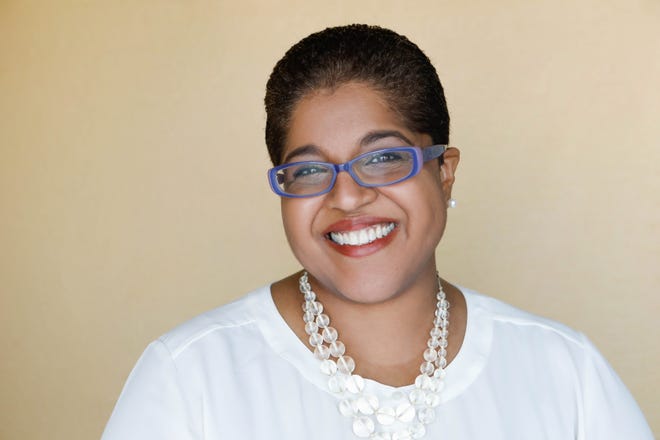
Sheryl Sandberg had barely gotten started in her career when she noticed how often she was interrupted mid sentence. “Even to this day, when I am in meetings where I am the same seniority as the other people, I still get interrupted more than men,” she said.
If Sandberg – one of the world’s most recognized business executives – is still being spoken over in meetings, what about women overall in the workplace?
According to LeanIn.org’s latest Women in the Workplace report with McKinsey & Co., women are more than twice as likely as men to be interrupted.
They are also twice as likely to get comments on their emotional state and 1.5 times more likely to have a colleague take credit for their work, the new study found.
The findings reinforce years of research that women face these sorts of microaggressions at a significantly higher rate than men. Most women – 78% – say they experience microaggressions at work.
For women with traditionally marginalized identities, the slights are even more demeaning. Asian and Black women are seven times more likely than women overall to be confused with someone of the same race and ethnicity.
For Sandberg, these are not just small indignities. Everyday sexism stalls women’s advancement in the workplace, especially at the top, shortchanging women and employers alike.
“People said to me many, many times. ‘Are you sure you want a career like this? Don’t you want kids?’ No one said that to the man. When I became the chief of staff at the Treasury Department, many people said to me: ‘They must really have wanted a woman in this job.’ As if there was no other explanation for my getting the job, it must be that I wasn’t as qualified as some guy,” Sandberg said. “Those are the things that undercut your confidence and also the things that get other people to trust you less.”
Microaggressions’ toll on Black women, LGBTQ+ women and women with disabilities
Microaggressions make it harder to take risks, propose new ideas or raise concerns, Sandberg says. Women self-shield or self-monitor, meaning they change the way they act or look, tone down what they say or hide aspects of their identity to protect themselves from mistreatment. Women who self-shield are over three times more likely to struggle with burnout or think about quitting, according to LeanIn.org and McKinsey.
The numbers are even higher for women from marginalized identities.
Nearly half of LGBTQ+ women toned down what they say to avoid being unlikeable and nearly half of women with disabilities didn’t speak up or share an opinion so they didn’t seem difficult. More than a third of Black women – three times the number of white women – said they had to code-switch – adjust their language behavior, and appearance to fit into the dominant culture – to blend in with others.
The consequences are not just to their careers. Decades of medical research have found that microaggressions contribute to depression and health problems such as high blood pressure, Sandberg said.

“I think the most important thing that all of us can do is start realizing the macro impact of microaggressions,” she said. “They have a large and lasting impact on women.”
Why so few Hispanic women at the topOnly two Latinas have been CEO of a Fortune 500 company.
What is the definition of microaggression?
The term microaggression was coined in the 1970s by Chester Pierce, a Harvard psychiatrist who studied the portrayal of African Americans in television commercials.
In 2007, Columbia University psychologist Derald Wing Sue resurfaced and expanded on Pierce’s work, bringing new attention to the everyday slights, indignities, put downs and insults. Since then, thousands of studies have validated the concept, according to Sue.

Sue’s research found that this subtle form of discrimination takes a major toll on women and others.
“While the original work was on racial microaggressions, we found that microaggressions could be experienced by any marginalized group,” said Sue, author of “Microaggressions in Everyday Life: Race, Gender, and Sexual Orientation.” “We found that many of these microaggressions resulted in low morale, lower productivity, lower problem solving, higher rates of depression, anxiety and anger and depressed psychological well-being. The performance of women, of people of color, of LGBTQ employees suffered immensely and it was a suffering that was invisible to the rest of the workforce.”
Why are they called microaggressions when their impact is macro?
Discussions about microaggressions spiked with rising racial tensions and rapidly changing demographics in recent years, sweeping the concept into the conservative war on “wokeness.”
Critics on the political right dismiss microaggressions as “macrononsense” and another example of identity politics run amuck in academia and in the workplace.
Sandberg applauds growing awareness of microaggressions but says the use of word micro to describe these workplace snubs has led to a broad misunderstanding of the cumulative harm they cause.
Ibram X. Kendi, founding director of the Boston University Center for Antiracist Research, wrote in his bestselling book, “How to Be an Antiracist,” that he no longer uses the term. “I detest its component parts – ‘micro’ and ‘aggression,’” he wrote. “A persistent daily low hum of racist abuse is not minor.”
Ruchika Tulshyan, the author of “Inclusion on Purpose” and the upcoming, “Uncompete” who wrote about the push to retire the term, says she prefers exclusionary behaviors.
“What we need to do is move away from thinking this is just something small and it’s no big deal and really confront the fact that, actually, it is a big deal and it is important to act,” Tulshyan said.

Sue says macroaggressions refer to programs, policies and practices that have a broad impact on large groups of people such as the glass ceiling. Microaggressions, on the other hand, occur at an interpersonal level. Think about how white men used to tell racist jokes that they passed off as harmless, Sue said.
“People when they talk about micro, the immediate impact is small, trivial, insignificant, but that is exactly the point that Chester Pierce wanted to make, that these microaggressions, these so called minor slights, have macro impact,” he said.
What can you do? Fight microaggressions with microvalidations
What can we do about microaggressions? Fight back with microvalidations, says Laura Morgan Roberts, an associate professor of business administration at the University of Virginia’s Darden School of Business.
These equally subtle yet potentially powerful gestures are the flip side of microaggressions, Roberts said, such as giving encouraging feedback or sincere compliments.

“The impact of microaggressions really comes from the accumulation, so that pattern over time that then creates a deleterious impact on an employee’s experience, their physical health and their psychological well-being,” Roberts said. “With microvalidations, instead of communicating something hostile, derogatory or negative to an individual or a targeted group, we are affirming someone’s contributions or potential.”
4 microvalidations to start using right now
–Acknowledge presence. Women or people of color are often assumed to be lower status when they walk into a room and are greeted with silence, not given full attention or are interrupted, Roberts says. Give a nod or a warm smile and make eye contact. When someone is speaking, put away your phone and close your laptop.
– Validate identity. Refer to people as they want to be referred to. Don’t use nicknames or anglicize names that are harder for you to pronounce, Roberts said.
–Voice your appreciation. Share in real time when colleagues make important contributions, even if they are disagreeing with you. Highlight achievements to other members of your organization, whether the individual is in the room or not, Roberts said.
–Support leadership and growth. The leadership of managers and executives who are not white and not men is often challenged so women and people of color don’t get the same opportunities they need to grow and aren’t given the respect they deserve, Roberts said. Express confidence in their leadership, acknowledge the challenges they face, make introductions to key contacts and provide encouragement and coaching.






